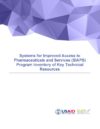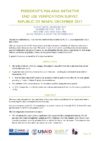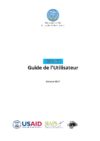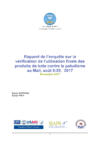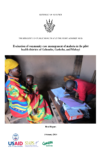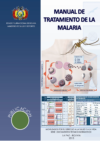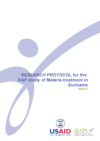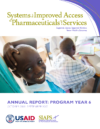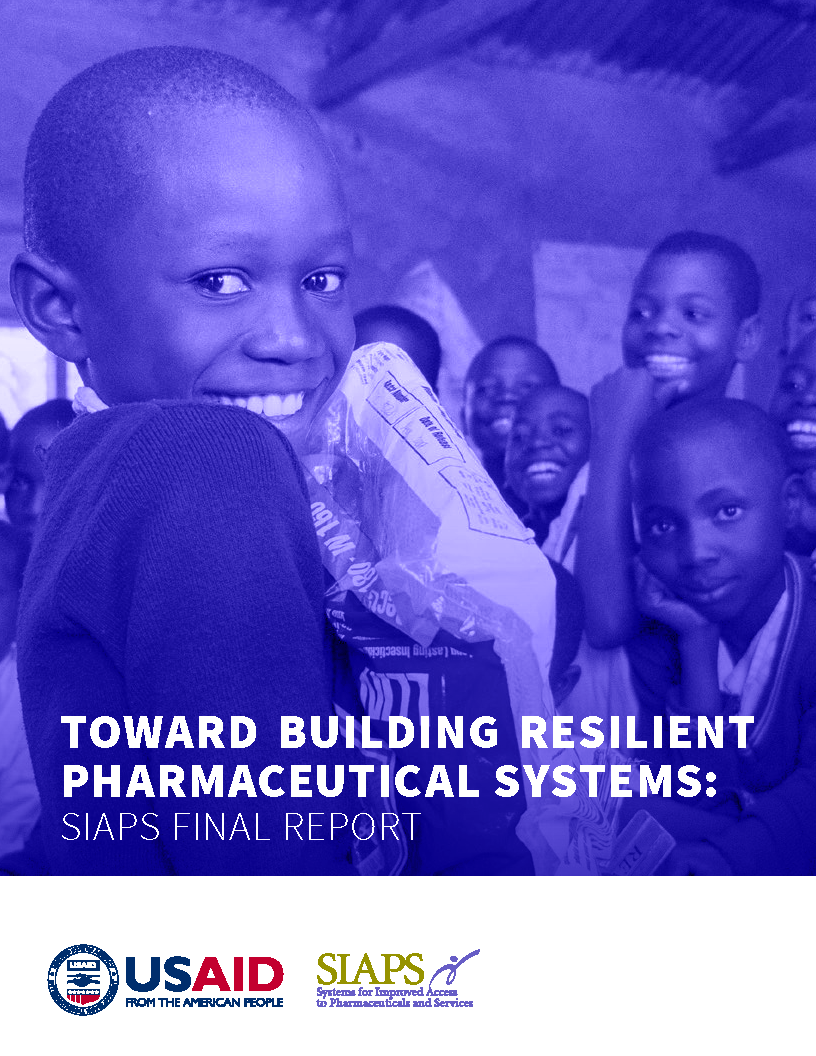The main purpose of this inventory is to serve as a reference to help stakeholders working in the pharmaceutical sector easily access and use already available SIAPS resources, including tools, experiences, and results. The document is also intended to serve as a technical legacy for SIAPS to support knowledge exchange and sustainability of related work. … Read more
AMR, Antimicrobial Resistance, Drug and Therapeutics Committee, essential medicines list, HIV/AIDS, Malaria., neglected tropical disease, pharmaceutical financing, pharmaceutical services, rational medicine use, RMNCH, standard treatment guidelines, Supply chain management, tuberculosis
The end use verification (EUV) survey was conducted on December 21-30, 2017, in the departments of Zou and Collines. The main objective of the EUV survey was to verify the continuous availability of malaria commodities in malaria patients’ last point of contact. The survey intended to ensure that good diagnostic and prescription practices within these … Read more
L’objectif de l’outil OSPSANTE est de capturer, de suivre, d’agréger et de diffuser des informations sur les produits de Nutrition et de lutte contre le paludisme, la PF, la SMI et le VIH, pour soutenir la prise de décision basée sur des éléments de preuve au Mali. L’outil OSPSANTE aidera le pays et les organisations … Read more
La présente édition de l’EUV a été réalisée août 9-29, 2017, sous la direction du PNLP dans les régions du sud du Mali. L’objectif de l’étude est de contribuer à améliorer la disponibilité, la gestion, et l’utilisation des médicaments et autres intrants antipaludiques dans les structures sanitaires publiques et parapubliques du Mali. C’est une étude … Read more
To accelerate achievement of the Millennium Development Goals (MDGs) and universal health coverage, Burundi has implemented different strategies, including PECADOM, or home-based community management of malaria. A PECADOM implementation guide was developed that compiled relevant information to inform the Ministry of Public Health and the Fight against AIDS officials about its implementation. The overall goal of … Read more
SIAPS Final Report showcases achievements across 46 countries. Interventions are described by intermediate results and health areas and demonstrate how SIAPS successfully worked with a range of stakeholders, including Ministries of Health, to bolster pharmaceutical systems and address country-specific needs. [button style=”download” link=”https://siapsprogram.org/wp-content/uploads/2018/03/SIAPS-End-of-Program-Report.pdf” color=”silver”]Download this file as a PDF[/button]
La Malaria o Paludismo es una enfermedad parasitaria, producida por protozoarios del género Plasmodium spp., transmitida por la picadura de un mosquito hembra del género Anopheles. En Bolivia, los casos de malaria son producidos por dos especies parasitarias: P .falciparum y P. vivax. Para que se produzca la enfermedad y se genere el ciclo de … Read more
In order to completely eradicate malaria in Suriname, it is important that gold miners and other inhabitants of gold mining areas test for malaria, use the prescribed treatment, and use the treatment correctly. The Government of Suriname malaria program aims to launch an intervention campaign to motivate gold miners to improve their treatment behavior. In … Read more
To learn more about SIAPS program activities worldwide, please read our annual report for program year 6.
SIAPS’ role to control malaria was recently featured in Health & Humanitarian: The Supply Chain Review. Between 2000 and 2015, malaria case incidences declined by 41% and mortality rates by 62%. However, approximately 212 million people were infected and 429,000 people died in 2015, with the majority being children under the age of 5 in … Read more
